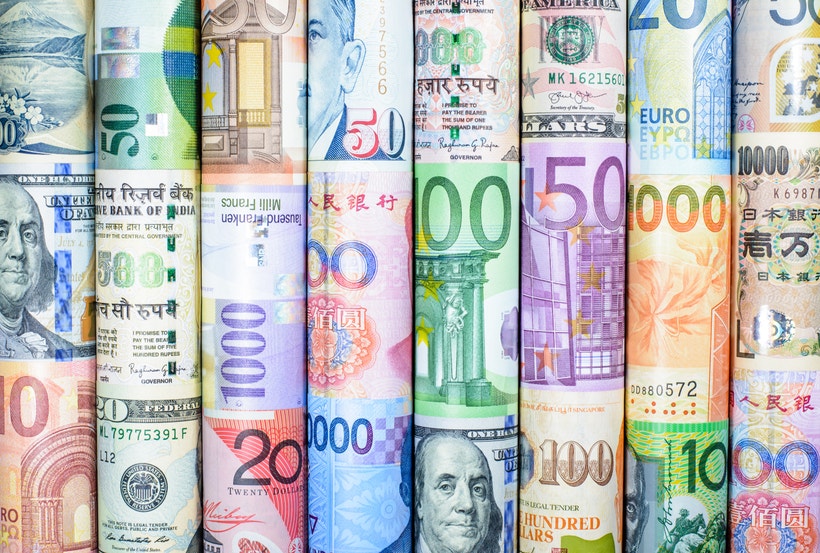Are cross currency pairs the next big forex trade?
Explore how declining US dollar volatility steers traders towards high-energy cross currency pairs like GBP/JPY and AUD/NZD, with potential for dynamic trading opportunities in the forex market.

Key points
- USD volatility is near historic lows around 6%
- GBP/JPY has continued through decade-long highs above 200.00
- EUR/GBP is near multi-year lows around 0.8400
- AUD has appreciated considerably against CAD and NZD
USD volatility near lowest levels
Amid historically low levels of USD volatility, traders are turning their focus towards more dynamic markets. With US dollar volatility indices showing a floor around 5-6%, and rarely dropping to zero due to inherent price movements, trading strategies are adapting. USD volatility got as high as 12% in 2022 and has steadily declined since. This shift prompts a deeper exploration into cross-currency pairs where volatility and potential profits might be higher.
Dollar-yen has stalled out at USD/JPY highs
The USD/JPY pair, after hitting a 30-year high, has been stable in a narrow range between 160 and 162, showing little directional movement. This lull in one of the traditionally volatile forex pairs indicates a potential saturation in market reactions and sets the stage for traders to seek opportunities elsewhere in the forex sphere.
Pound-yen has blown past decade highs
In stark contrast to USD/JPY, GBP/JPY has surged to new decade highs, breaking past the 200 level and trading as high as 208. This pair's dramatic price action reflects significant market reactions to geopolitical events and economic data, highlighting the heightened volatility that can offer potentially lucrative opportunities for astute traders.
EUR/GBP trading near 0.8400 lows
EUR/GBP has also seen notable fluctuations, now approaching its lows since Brexit. This pair's movements, especially breaking significant levels like 0.8400, provide a clear indicator of the shifting economic influences between Europe and the UK. Politics have been especially influential in this exchange rate lately; surprise parliamentary elections in France hampered the euro and a new ruling Labour party in the UK bolstered the pound. By removing USD and trading the cross directly, traders can be exposed to both sides of these political and economic movements.
Aussie forex pairs rising significantly
In other regions of the world, the Australian dollar against the NZD and CAD has reached multi-month highs, propelled by distinct macroeconomic factors affecting the commodity-driven economies. These pairs' rise is reflective of the broader shifts in commodity prices and regional economic performances, offering diverse trading entry points.
AUD/NZD breaks through 1.1100
The AUD/NZD pair's recent surge past the 1.1100 mark, gaining 300 pips in just a month, highlights its volatile nature and the potential impact of central bank policies on forex pairs. This movement has been influenced by comparative economic policies and dovish stances from the central banks, which have significantly affected relative currency strengths.
Exploring minor and exotic currency pairs
Beyond major pairs, minor and exotic currencies are drawing attention for their unusual fluctuations and trading potential. Pairs like AUD/CAD show interesting trends due to their classifications as commodity currencies, while offering low spreads and accessible margins similar to major pairs, providing a compelling mix for adventurous traders.
How to trade currency crosses
- Open an account to get started, or practice on a demo account
- Choose your forex trading platform
- Open, monitor, and close positions on non-USD pairs
Trading forex requires an account with a forex provider like tastyfx. Many traders also watch major forex pairs like EUR/USD and USD/JPY for potential opportunities based on economic events such as inflation releases or interest rate decisions. Economic events can produce more volatility for forex pairs, which can mean greater potential profits and losses as risks can increase at these times.
You can help develop your forex trading strategies using resources like tastyfx’s YouTube channel. Our curated playlists can help you stay up to date on current markets and understanding key terms. Once your strategy is developed, you can follow the above steps to opening an account and getting started trading forex.
Your profit or loss is calculated according to your full position size. Leverage will magnify both your profits and losses. It’s important to manage your risks carefully as losses can exceed your deposit. Ensure you understand the risks and benefits associated with trading leveraged products before you start trading with them. Trade using money you’re comfortable losing.
